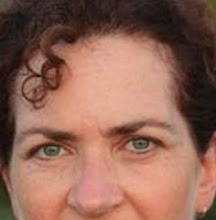Last weekend was my much-awaited return to Killdeer Plains Wildlife Area, a date marked with exuberance on my calendar of summer events by colorful rings and several stars. Last year I had attended a workshop there for the first time, not as an Ohio Certified Volunteer Naturalist (OCVN) for whom these weekends are designed to offer advanced training, but just as an extra—someone interested in an opportunity to explore a wonderful wildlife area and learn from the experts about it.
Since last year’s visit, having had such a great experience I investigated the OCVN program, “a research-based scientific training program that emphasizes hands on natural resource education coupled with community-based volunteer service,” enrolled in classes and completed the coursework. In a sense, this return brought me back to where it all began.
Why a second look?
Because a prairie is a place you must feel to understand.
Defined by Webster, a prairie is “land in or predominantly in grass.” And for most of my life, the only image I knew of a prairie was the rolling field of swaying grass and waving wildflowers that Laura Ingalls, her hair in 2 long braids, bounded through as a young pioneer heroine on Wednesday night TV. Typically treeless, prairies are often primarily composed of grasses—native prairie grasses that often tower 4 feet or more such as Big Bluestem, Little Bluestem, Switch Grass or Prairie Cord Grass.
And, just as the land itself can range from wet to dry, providing a dark rich loam or the challenge of leached sand flats, each is distinguished by unique prairie wildflowers that bloom wildly in profusions of color, thriving in, what to many would be, inhospitable ground.
But, the definition of a prairie is almost incomplete without the mention of time—they’re our most native landform, expanding with the retreat of the glaciers and remaining for thousands of years until European settlement.
While most of the original million plus acres of prairie in the Midwest have been claimed for agriculture and tilled until only a small fraction remains, a remnant can be found at Killdeer Plains Wildlife Area in north central Ohio.
For 2 days, our group of 40, led by instructors David Brandenburg (botany), Jim Davidson (butterflies), George Keeney (beetles), and Bob Placier (birds) spent mornings in the classroom and afternoons walking the fields of Killdeer Plains. With spotting scopes in tow and hand lenses dangling from our necks, we dove into the flora and fauna of this tallgrass prairie habitat.
It was immersion—from dawn until dark.
Bald eagles soared above our heads while we peered into the corollas of the tiniest flowers of a mountain mint resting in the palms of our hands. We tasted the tasty flowers and rubbed our hands against the roughness of prairie dock. We hopped in and out of vehicles as we laced our way along the narrow dusty roads, stopping to stoop at carcasses where carrion beetles performed the thankless task of decomposer.
In the bright sunshine, Pipevine swallowtails flashed us with iridescent blue against a field of early goldenrod while Halloween pennant dragonflies adorned the tops of every teasel.
By dark, the sounds of the night took over.
Where the rhythmic drones of scissor-grinder cicadas had filled the heated hours of daylight, nighttime resounded with the trills and scrapes and buzzes and ticks of countless katydids.
Jim McCormac led a night hike and we waded through the brush searching with our flashlights for the leafy green singers whose songs he played as they called to us at eye level from within dense tall stands of prairie cord grass. Night brought a heavy dew, and by morning the misty web-covered field lay quiet.
A prairie is more than a shrinking shape on a map, its makeup more than a list of hardy, drought-tolerant, fire-resistant plants.
It is heat and sound,
tenderness and strength,
woven into a colorful tapestry that is rolled out beneath a wide sky.
To understand a prairie you must walk within one.
.






































%20copy%202.jpg)


















8 comments:
What a delightful outing you had. That halloween pendant shot is marvelous. Actually all of your photos are marvelous. They convey the energy of your composition to a new level.
I felt I had walked that prairie with you Nina. Each superb picture complementing your text beautifully.
Excellent.
Oooooo.... Prairies have been calling my name of late. Methinks I need a road trip. Your photos are wonderful and have given me inspiration.
Your retelling of the events makes me nostalgic.
Walking through my grandfathter's hay fields in New Englad when I was young used to make me feel like this and I totally understand. It just was not as vast as a prairie, but as a child it seemed immense to me. I used to try to run around in that wide open space as if my motion could fill the emptiness, as if my body were writing on the universe.
All your photos are splendid, but the halloween pendant is outstanding~gail
I love the misty morning shot. Very nice.
Your Halloween pennant is absolutely stunning. It made me gasp with pleasure. You must be delighted with it, Nina.
Post a Comment